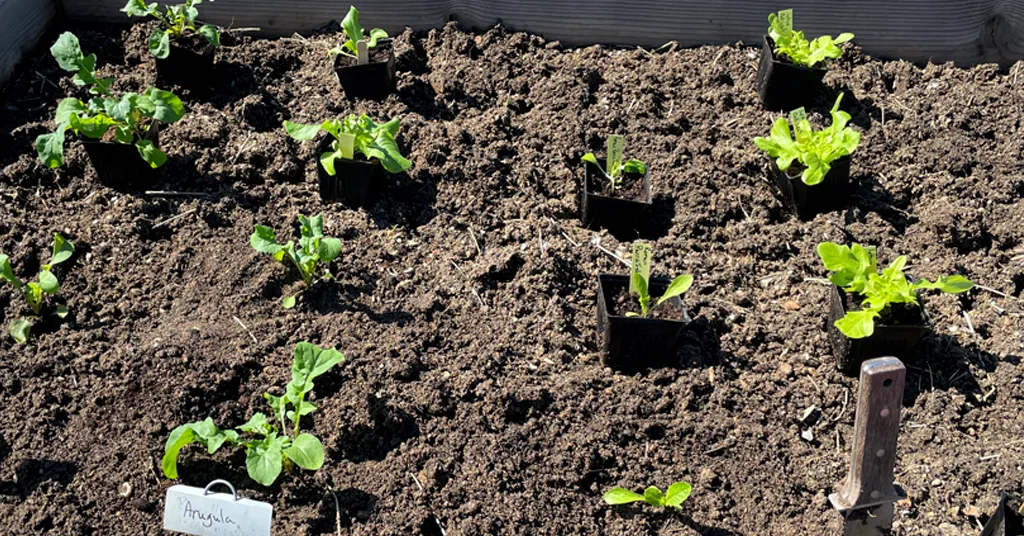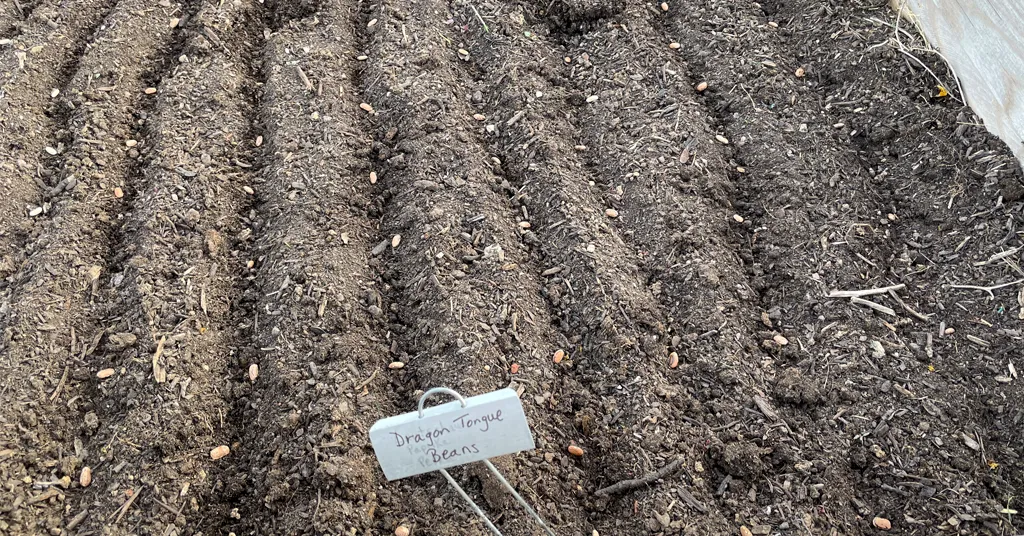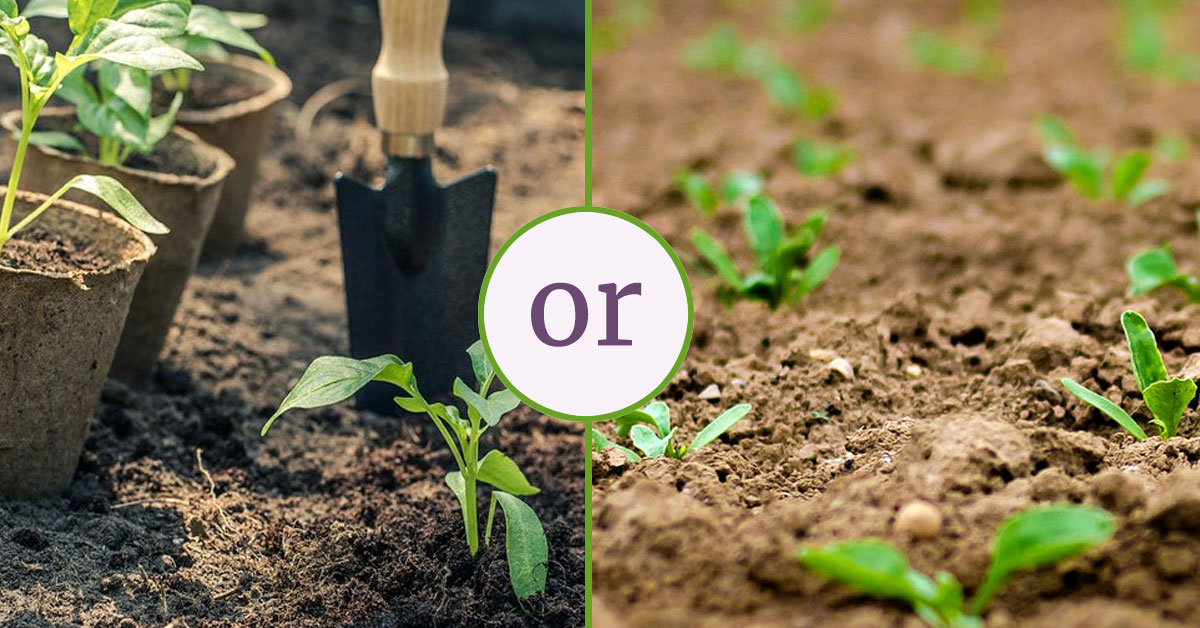This post may contain affiliate links. When you purchase through links on my site, I may earn a commission at no cost to you. See my Privacy Policy for details.
At some point in your gardening adventures, you are going to be asking yourself if you should be transplanting a seedling or direct seeding your crops into your garden. It’s important to understand the different methods of planting your garden. Two common methods of starting a garden are transplanting and direct seeding.
When I first started gardening, I purchased plants from the local store and transplanted them into the ground. It was the easiest method for me at the time. As I learned more about the different vegetables I found that some like to be directly seeded into your garden instead of being transplanted, while others thrive as transplants.
Choosing a Method
Choosing which method you will use for your garden will depend on 3 main factors:
- The crops you want to plant,
- Your climate – specifically your first and last frost dates,
- How you want to manage your garden.
Let’s discuss more about transplanting and direct seeding to help decide which might be the best for your garden. My garden plan relies a lot on transplants, so let’s start there.
Transplanting Seedlings
Transplanting seedlings is the process of taking a plant that is already growing in a container, and moving that plant into your garden. So you are starting with a baby plant instead of starting from a seed.
Transplanting is a fantastic way to grow in your garden. It’s exactly how I got started gardening. You can simply purchase plants from your local garden center, farmers market, or even from some big box stores like Home Depot and Lowes. Then you just transplant them into your garden. Even though your choices may be limited, your local stores and farmer’s markets will stock plants that should grow well in your region.
Instead of buying the baby plants, some gardeners will start their seeds indoors. This is a process I’ve grown very fond of in my garden. I’ll start the seeds indoors in containers. When it becomes warm enough for the seedling to survive outdoors, I’ll transplant it into my garden. This is also a great way to cut down on some of the costs of transplanting. It can be far more economical to buy your seeds instead of buying plants from the store.

Transplanting Reasons
Transplanting can be done for a variety of reasons, including:
- To give your plants a head start – Starting your plants indoors allows them to grow larger and stronger before they are planted outside. This can help them establish themselves more quickly and ultimately produce more fruits or vegetables.
- To extend the growing season – By starting your plants indoors, you can extend the growing season by several weeks or even months, allowing you to harvest your crops earlier or later in the year.
- To control pests and diseases – Starting your plants indoors can help protect them from pests and diseases that can affect them in the outdoor environment.
When transplanting, it’s important to carefully move the plants to their new location, being sure to disturb the roots as little as possible. You should also make sure to acclimate your plants to their new surroundings by gradually exposing them to the outdoor environment.
Direct Seeding
Unlike transplanting, direct seeding (or direct sowing) means you are planting seeds directly into your garden soil outside. This method is often used for plants that don’t tolerate transplanting well, such as root vegetables or plants with taproots. The process of direct seeding overcomes several of the drawbacks that come with transplanting, making it the preferred method for several types of crops.
Direct seeding can be done for a variety of reasons, including:
- To save time and effort – Direct seeding eliminates the need for starting your plants indoors and the additional work that comes with transplanting.
- To promote stronger root systems – By planting your seeds directly into the soil, you can promote stronger root systems and healthier plants.
- To save money – Direct seeding can be a more cost-effective method of planting, as it eliminates the need for seed starting equipment and supplies.
One of the main advantages of direct seeding is improved drought tolerance. This is because the plant’s roots will grow and establish without any damage or trauma that typically comes with transplanting known as ‘Transplant Shock’. This trauma can delay the plant’s maturity and harvesting timeframe.
Timing when you sow your garden is an important factor for your direct seeding. You need to pay close attention to your first and last frost dates, and the type of plant you are trying to grow. Many varieties of plants require longer growing seasons to be successful in some climate areas. Be sure to research your area’s climate to help determine the best time for to direct seed in your garden.

Direct Seeding Drawbacks
Direct seeding does have some drawbacks. For one, the sowing rate is higher when direct seeding than when seed starting for transplants. This is because direct seeding exposes our little seedlings to the elements. Some of the seeds may not take root or germinate, or they might become a snack for a passing bird. So we need to make sure we compensate for that by sowing some extra seed.
Direct seeding can also occupy precious garden real estate for longer than necessary. Instead of maturing a plant indoors, we’ll be taking up garden space that could be used to grow a shorter-cycle crop like radishes.
Which planting method is right for my garden?
The short answer to the question: it depends. It depends on the type of crop you are planting, the climate you live in, and how active you want to be in your growing season. Over the years, I’ve incorporated both methods into my garden plan.
I found that direct seeding is best for all of my root vegetables. This is because crops like carrots are very sensitive to Transplant Shock as I mentioned before. Carrots hate when their root systems are disturbed. As a result, I end up with very tiny carrots after transplanting.
On the other hand, Tomatoes and peppers are great for transplanting. This is based on my area’s first and last frost dates. In Maryland, my last frost date could be as late as April 26th. If I waited to direct seed they would take up a lot of garden space early in the growing season. By nurturing these crops indoors and transplanting them, I can grow a lot of early-season crops until it’s time to move the tomatoes outside.
Whether you choose to transplant or direct seed your plants, the most important thing is to provide them with the proper care and attention they need to thrive. This includes proper watering, fertilization, and pest control. By understanding the differences between these two methods and selecting the one that is best for your garden, you can enjoy a bountiful harvest and a beautiful garden all season long.

